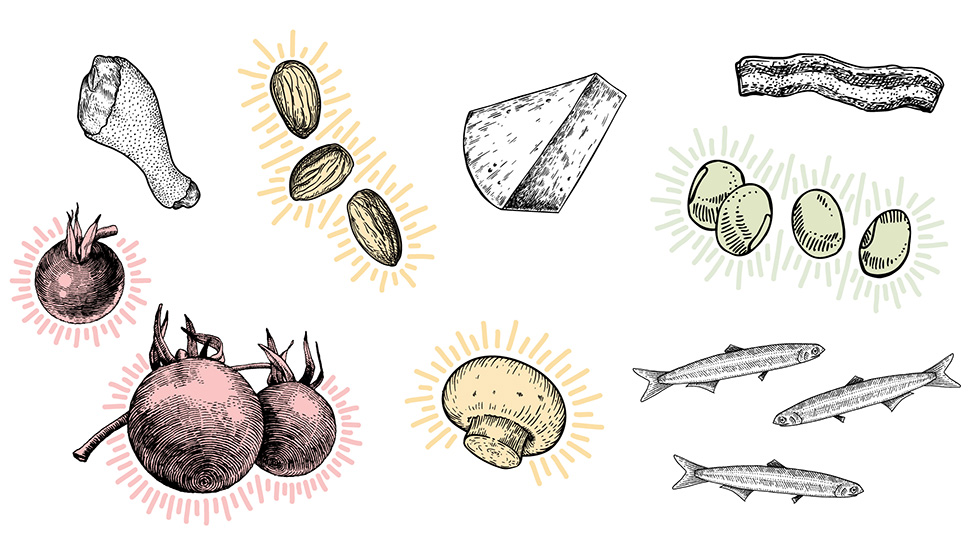Yup. So long as umami is in the mix.

Tomatoes. Shiitakes. Anchovies. Parmesan. If you think these foods are delicious, science backs up your palate. Each of these foods is a rich source of umami, that once hard-to-define fifth taste now described (indeed, defined) as “savory deliciousness.”
While umami’s flavor-boosting properties can deepen the sensory pleasures of a wide array of dishes, its impact on plant foods may be especially apparent. With umami in the mix, large quantities of meat become unnecessary to create a savory flavor profile and satisfying overall taste experience.
But what is umami? Derived from the Japanese word umai (“delicious”), umami is recognized alongside sweet, salty, bitter, and sour as a flavor humans respond to automatically. We even have dedicated umami taste receptors.
According to the Umami Information Center, a Tokyo- based nonprofit, we can thank Japanese scientist Dr. Kikunae Ikeda for “discovering” umami. In 1908, he “attributed this fifth taste to the amino acid glutamate found in large quantities in kombu seaweed…” Five years later, according to Flavour: From Food to Perception (Wiley, 2016), umami was recognized in katsuobushi (dried bonito flakes, known chemically as an inosinate), and later still, in guanylate, which is prominent in dried shiitakes and results “from the biochemical degradation of yeast RNA.” Collectively, these three nucleotides — glutamate, inosinate, and guanylate — account for the vast majority of the savory deliciousness in umami-laden foods.
And there are many such foods, both of the animal and plant variety. In addition to tomatoes, mushrooms, anchovies, parmesan, and seaweed, fermented foods such as soy sauce and miso are also umami-forward, as are dry-cured hams and salted squid. This chart offers a rundown of such foods and quantifies the milligrams of glutamate, inosinate, and guanylate in each. And remember: A little bit of these foods goes a long way.
So even if you’re a meat-lover, next time you’re creating a meal, don’t shy away from using 90 percent (or more) plant foods. By adding targeted sources of umami, your plant-forward dishes will be deeply satisfying, savory, and, yes, demonstrably delicious. It’s science!